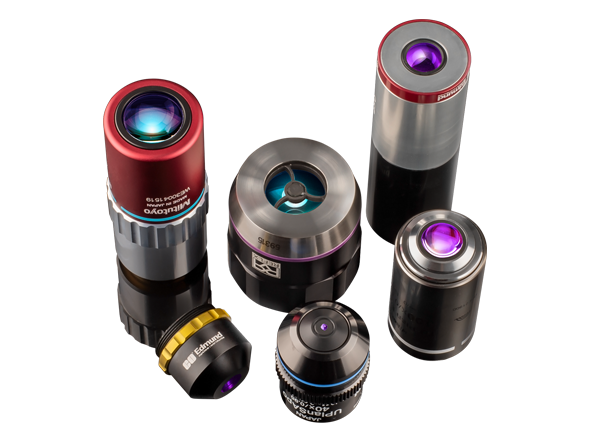

Factory automation is the continuously increasing manufacturing trend of using computerized control systems, programming, and sensors to perform repetitive tasks with reduced human oversight. Machine vision systems collect feedback information about objects of interest and the environment the objects are situated within, much like how humans use eyes.
Ruggedized lenses are designed to withstand the harsh environments of the many demanding applications and are available in four types: Industrial, Ingress Protected, Stability, and Athermal Ruggedization.
Industrial ruggedized lenses will survive shock and vibration. Ingress protection ruggedization seals assemblies from moisture. Stability ruggedization not only protects from shock and vibration damage, but also maintains the position accuracy and repeatability of the optical pointing stability. Athermalization eliminates performance changes due to swings in the operational temperature of the application environment.
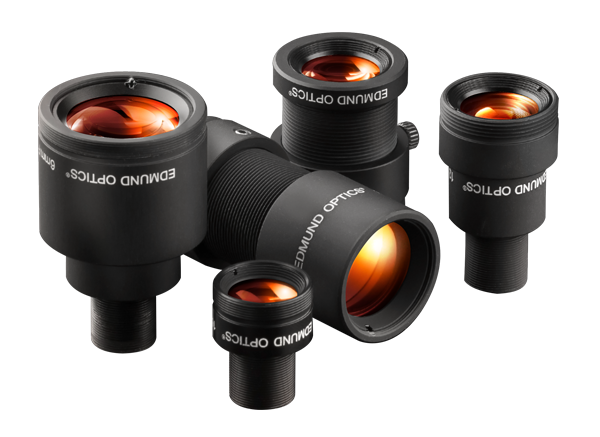
Many machine vision systems are simply used to detect the presence of defects or successful installation of components, but others require high-precision, high-accuracy measurements systems for critical dimensional information.
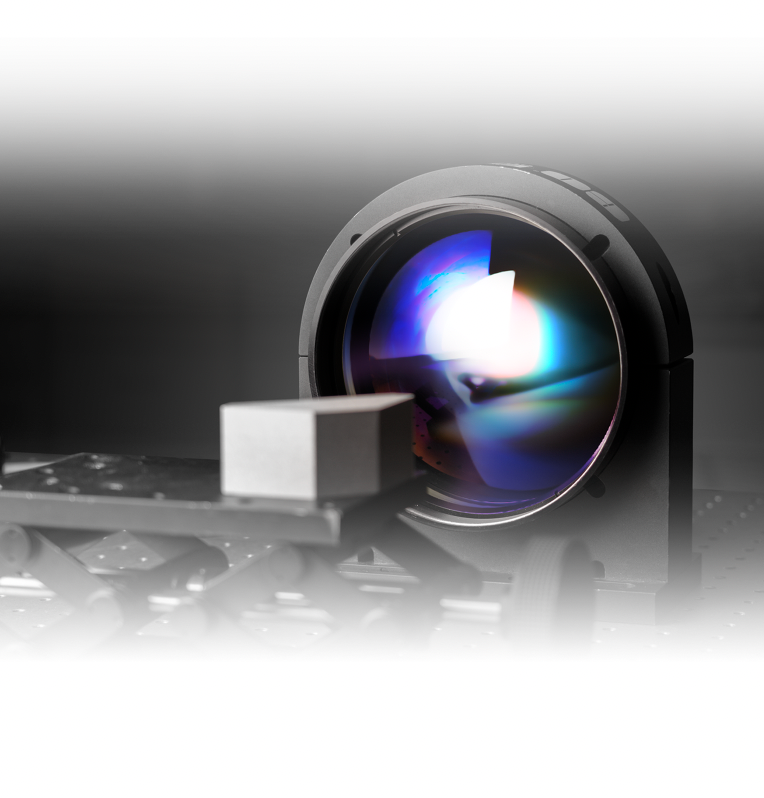
Fixed focal length lens
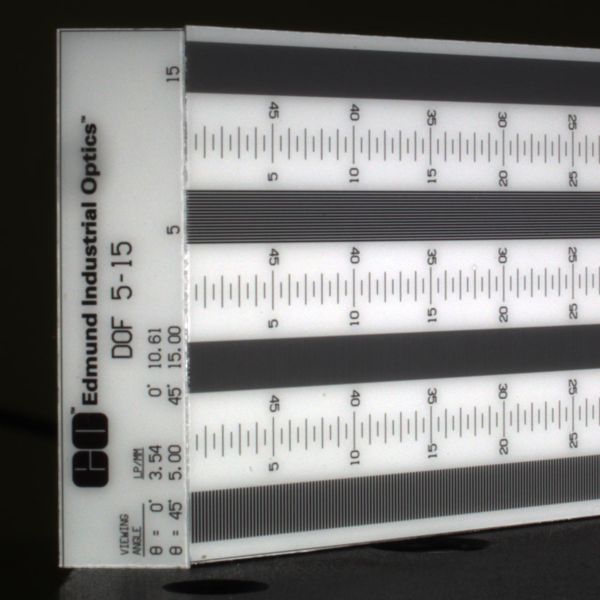
Telecentric lens
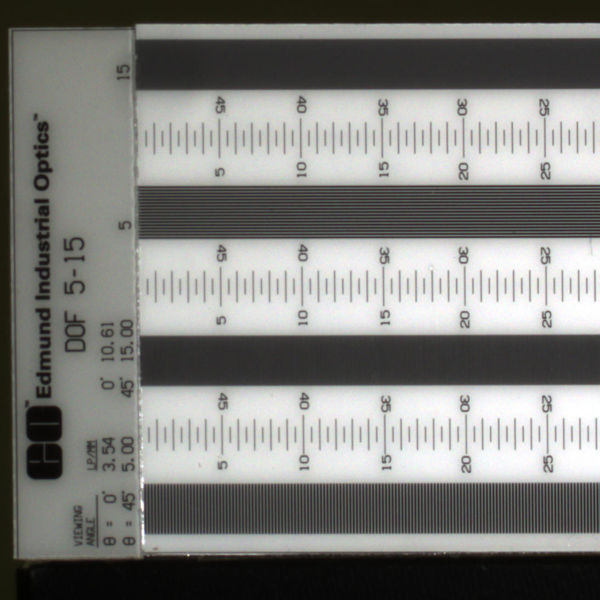
Telecentric lenses produce images free of parallax or perspective error (right) as opposed to fixed focal length lenses (left).
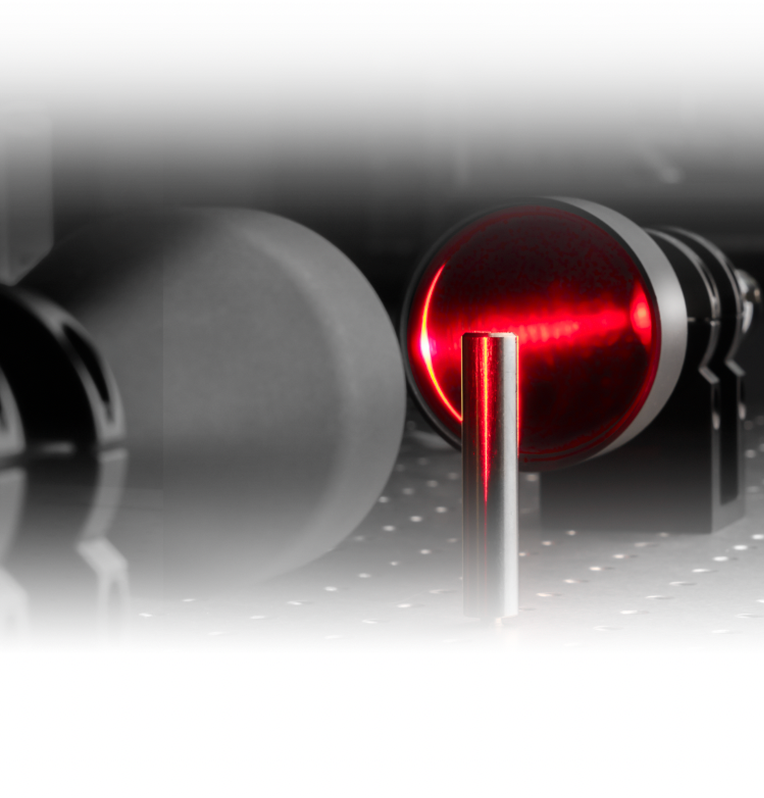
Telecentric
backlight
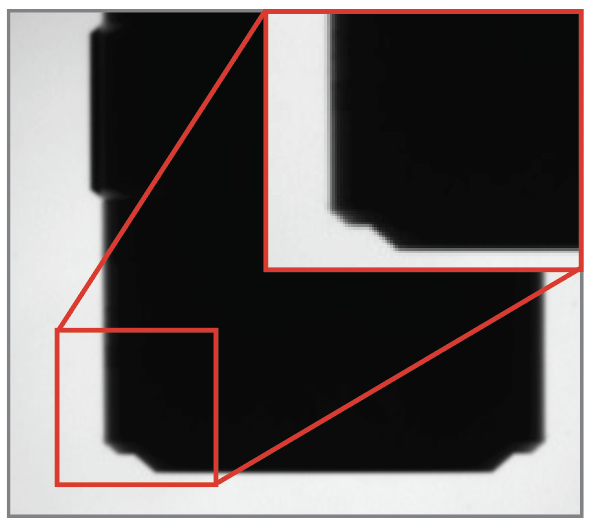
Conventional
backlight
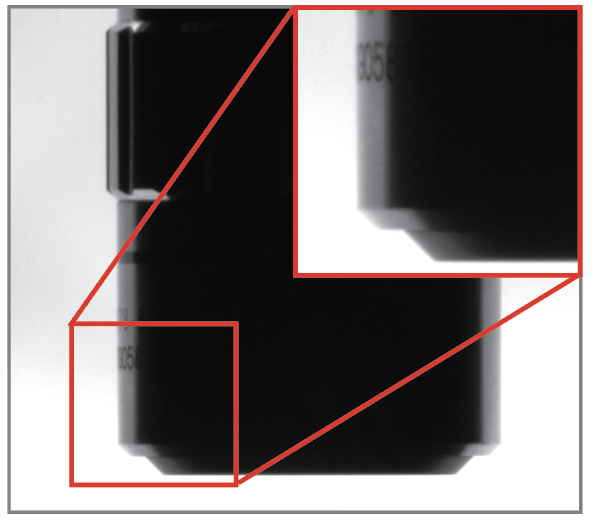
Telecentric lenses used with telecentric illumination produce images with sharp contrast at edges (left) as opposed to conventional backlight (right).
For measurement, conventional fixed focal length or factory automation (FA) lenses introduce too much parallax or perspective error. Telecentric lenses functionally eliminate image parallax, and their use with collimated backlights or better telecentric illumination yields deep contrast, minimal blur, and sharp edges, as well as highly accurate dimensional measurements.
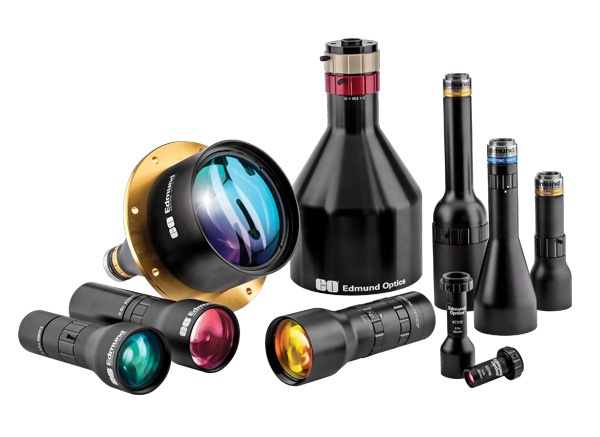
From advanced in vitro, in vivo, and in situ diagnostic platforms to machine vision inspection for pharmaceutical packaging, imaging systems are used in a wide range of life science applications. Some imaging applications include microscopy (fluorescence, brightfield, darkfield, etc.), polymerase chain reaction (PCR), flow cytometry, microfluidics, surgical robots, and so many more.
With partnerships from trusted brands including Mitutoyo, Olympus, Nikon, Coherent, and Zeiss, Edmund Optics® 200+ engineers are ready to assist with product selection, application support, or even custom design and manufacturing. Our manufacturing facilities are ISO 13485:2016 certified and have extensive experience with lot control, change control, serialization, traceability, and many other critical FDA requirements.
